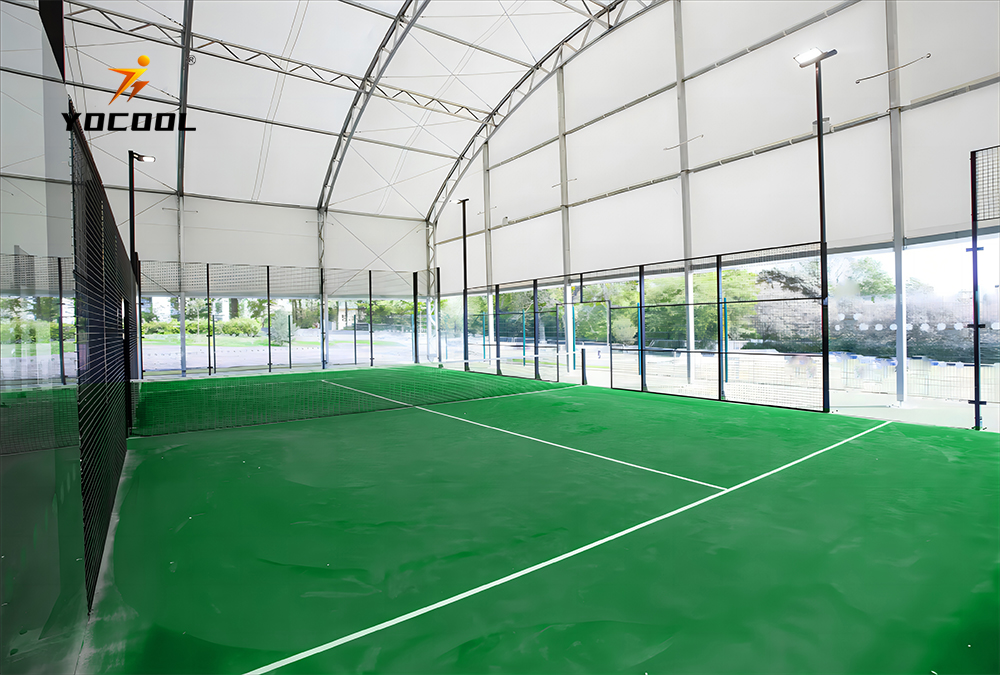

The Manufacturing Landscape of Racquetball and Squash Courts
Racquetball and squash, both demanding racquet sports, have gained significant popularity in recent years. They provide excellent cardiovascular workouts, enhance agility, and foster social interaction among players. As a result, the demand for racquetball and squash courts has surged, giving rise to a niche but essential factory industry focused on producing court materials and equipment. This article explores the manufacturing landscape of racquetball and squash courts, the materials used, and the innovations shaping their future.
The Importance of Court Design
The design of racquetball and squash courts is integral to the quality of play. These courts must meet specific dimensions and standards defined by governing bodies such as the World Squash Federation and the International Racquetball Federation. Typically, a standard squash court measures 32 feet long, 21 feet wide, and 15.5 feet high, while a racquetball court measures 40 feet long, 20 feet wide, and 12 feet high. The walls, floors, and ceiling of each court must be made from materials that not only ensure durability but also provide the desired playing characteristics, such as ball rebound and player safety.
Materials Used in Court Construction
The choice of materials profoundly influences the performance of racquetball and squash courts
. The most commonly used materials include1. Wood Often used in traditional settings, wooden floors offer excellent shock absorption and favorable ball bounce. Maple and oak are popular choices, providing both aesthetics and functionality. However, wood requires regular maintenance to preserve its quality.
2. Synthetic Surfaces Growing in popularity due to their durability and low maintenance needs, synthetic surfaces like rubber and vinyl provide excellent traction and shock absorption. They can be engineered to replicate the playing characteristics of wood while offering enhanced resilience against wear and tear.
3. Glass Walls In many modern racquetball and squash courts, glass walls are incorporated to allow spectators to view the game. These walls must be tempered for safety and designed to minimize the impact on playing dynamics.

4. Specialized Paints and Finishes The walls and floors of the courts need coatings that provide the appropriate level of grip while allowing for easy cleaning. Specialized paints are developed to meet these requirements and often include anti-UV properties to prevent degradation from sunlight exposure.
Innovations in Court Manufacturing
The court manufacturing industry has not remained stagnant; innovation is vital in catering to the evolving needs of players and facilities. Recent advancements include
1. Advanced Engineering Modern computational design techniques allow for precision in court dimensions, enhancing both the playing experience and safety. Manufacturers are increasingly using 3D modeling to simulate how different surfaces and materials will perform.
2. Eco-Friendly Materials With a growing emphasis on sustainability, many court manufacturers are exploring eco-friendly building materials that minimize environmental impact. Recycled materials have found their way into court construction, reducing waste and promoting a greener approach.
3. Lighting Technologies The integration of innovative lighting systems has improved visibility and aesthetics in court environments. LED lights provide energy-efficient lighting solutions, and smart lighting systems can adjust to different times of the day or match the ambiance of events.
4. Modular Court Designs Some manufacturers have started to design modular courts that can be easily transported and assembled. This innovation is especially beneficial for events, tournaments, and facilities with limited space.
Conclusion
The manufacturing of racquetball and squash courts is a dynamic field driven by the growing popularity of these sports. As players' expectations evolve, so do the materials, designs, and technologies that define court construction. From the choice of hardwoods to synthetic surfaces and cutting-edge designs, the landscape of racquetball and squash courts is ever-changing. This commitment to innovation ensures that facilities can provide players with the highest quality experience while adapting to the principles of sustainability and modern design. As both sports continue to thrive, the factories dedicated to producing these courts will play a vital role in their growth and accessibility around the world.
High-Performance Industrial Flooring Solutions China Paddle Tennis Court for Sale
High-Performance Industrial Flooring Solutions Durable & Cost-Effective
Homogeneous Transparent Floor – Durable & Stylish Rubber Floor Solutions
Premium Homogeneous Transparent Floor for Durable & Stylish Spaces Rubber Floor Solutions
Premium Sports Floor Solutions Durable PVC Sports Floor & Rubber Floor for Gyms
Durable Rubber Composite Floor Premium Rubber Floor & Mats Solutions